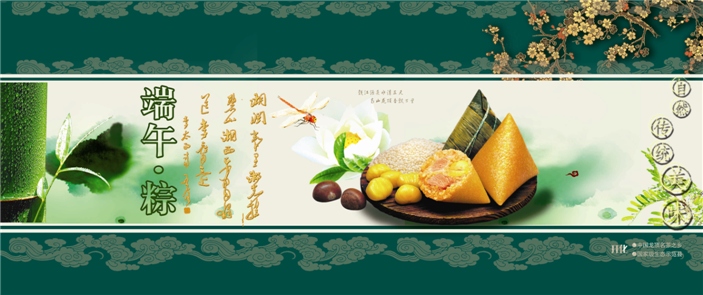| Home > China Feature |
Zhangjiajie -- lost horizons
BEIJING, Sept. 25 -- It is a fact of life, not necessarily to be applauded, that the world is largely an English-speaking place and that most people abuse this when traveling overseas.
Wherever people are (with the exception of France, perhaps!), the natives are often ready and willing to hold a passable conversation with them, especially if they are in a service industry or trying to sell them something.
It would be all too easy to spend one's life in such blissful ignorance of any other language, were it not for the occasional mishap that occurs when one finds oneself in uncharted waters.
So it is in modern China, where its people's magnificent obsession with learning English has not yet reached those places which are for the first time opening their doors and hearts to foreigners.
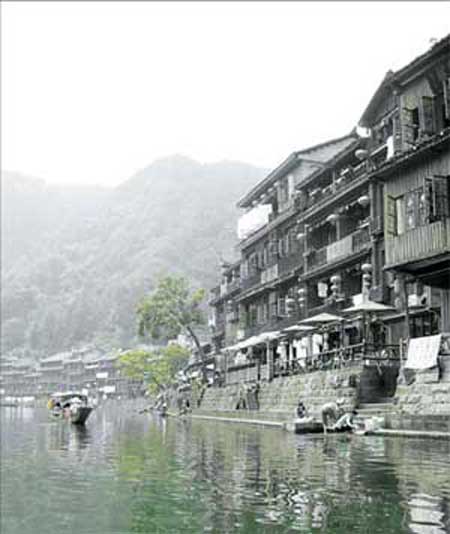
One such place is Zhangjiajie in western Hunan, one of the jewels in China's tourism crown.
Blessed with the chance to explore this land of spectacular scenery, my first discovery was most unwelcome: Nobody on my media tour bus, including the guides, spoke any English and these were to be my companions for the next week.
It is a frustrating and lonely experience when everything is explained in a foreign language to people who all around are absorbing a wealth of information, chatting and generally making merry, and when even media hand-outs and maps are also in Chinese and make no sense to the rest of the group.
With my ears likely to be of limited use in the days ahead, I resolved to open my eyes instead and the visual treats all around began to penetrate my resistance, for this is truly a place where you can gaze in awe at the finest scenery imaginable.
The Tourism Festival opened in, and focused on, its trump card, Zhangjiajie. 2008 is the city's 20th birthday but it has been a difficult one for the tourism industry, struck first by a freezing winter with icy roads and snowstorms, an economic downturn, shortened national vacations and, of course, the Sichuan earthquake.
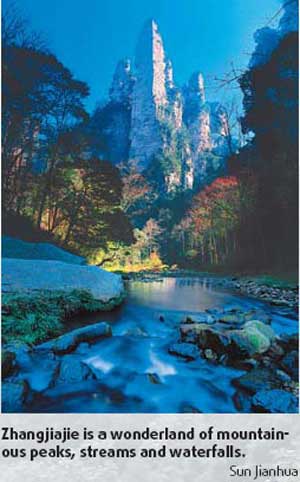
The festival was a proactive effort to promote the region to a wider audience and thus revive this crucial element of the local economy.
My group stayed for five of the seven nights at the Xiangdian resort, 30 km from the city center but next to the country's first National Forest Park, a 7,000-sq-km wonderland of mountainous peaks up to 400 m high, streams, waterfalls and even naturally formed bridges. Well-informed tourists have been coming here ever since it was listed by UNESCO as a World Natural Heritage site in 1992.
Strolling through it is a breeze - even the old and frail would have little difficulty negotiating the well-laid concrete walkways, both at ground level and up high along mountainside edges.
The peaks are all around, hundreds, if not thousands of them and they are the result of many years of erosion and quite a distinctive feature of Chinese landscapes.
If the sights alone don't take your breath away, the journeys between them surely will. First, a 385-m vertical ride up the glass-sided Bailong Lift on the outside of a mountain, the world's highest free-moving elevator; then the longest (7.5km) cable car ride in the world at Tianmen Mountain, followed by another aerial trip on an open-sided 2-seater chair, reminiscent of those found at ski resorts, with nothing between you and the clouds except for a movable metal bar.
During the epic cable car ride, I looked at the route ahead and the cable suddenly angled up and vanished vertically into the mist above. Surely, one wasn't heading up there. Wrong! This heart-stopping voyage carried me through the clouds as if I was truly flying through the sky.
Throughout the trip, my group bumped into a group of German tourists doing the same route. These well-seasoned travelers agreed the National Forest peaks were the equal of anything they had seen.
They also took pity on me and let me join their group for a day so I could benefit from their English-speaking guide. I stuck to them like glue and would have asked for a repeat the next day but at day's end found their base to be a 20-minute drive from mine - the tour bus driver agreed to get me back for 100 yuan. They are not averse to fleecing the unwary.
My week-long trip finished with a 4-hour bumpy ride to the charming 1,300-year-old town of Fenghuang (Phoenix Town), home of the Miao ethnic group. If the aerial jinks of Zhangjiajie don't jangle your nerves, this certainly will.
Our group hurtled at breakneck speed through the winding roads, with steep falls beckoning at every turn, all the time the driver's horn sounding near-continuously as if his hand were glued to it.
Once in Fenghuang, though, the tempo changed as I absorbed the town's gentle charm. By day, a trip to the Southern Great Wall on the town's outskirts. Originally built 450 years ago by Ming Dynasty (1368-1644) rulers to defend the town from the rebellious Miao people, it was only discovered in 2000. Its original 190 km has either collapsed or been reduced by decay.
Then back to town and a gentle boat ride down the Tuojiang River which runs through its heart, a chance to admire the rows of waterside houses built on high stilts.
By night, it was farewell party time with a visit to one of the many bars and restaurants flanking the river. Thankfully, "ganbei" ("bottoms up") is a familiar concept.
My hotel, the Grand, was a 10-minute walk to the town's bustling shopping street. Like the Xiang Dian, it offered free Internet access - the Grand even provided a PC with Internet in my room, ideal for backing up digital pictures.
The Zhangjiajie region is deservedly getting the star treatment by tourism promoters and its people charmed me from start to finish. As time passes, more overseas visitors will eagerly seek it out on the map. I hope it's a map they all understand.
Art
 more
moreSculpture in Qianling Mausoleum
The sculpture of Qianling Mausoleum is the main relic of the ground ...
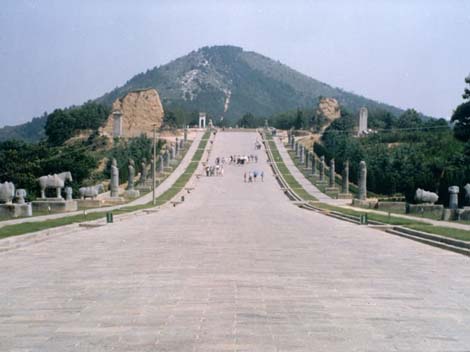
A Sweet Art:Sugar Painting
In and around China’s southwestern Sichuan Province, it is usual to ...
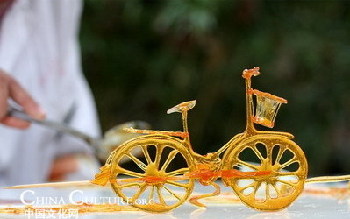
Chinese Treasure Displayed at Sha...
There are four treasures of the Chu Minority Culture displayed at th...

Custom
 more
more




 print
print  email
email  Favorite
Favorite  Transtlate
Transtlate 